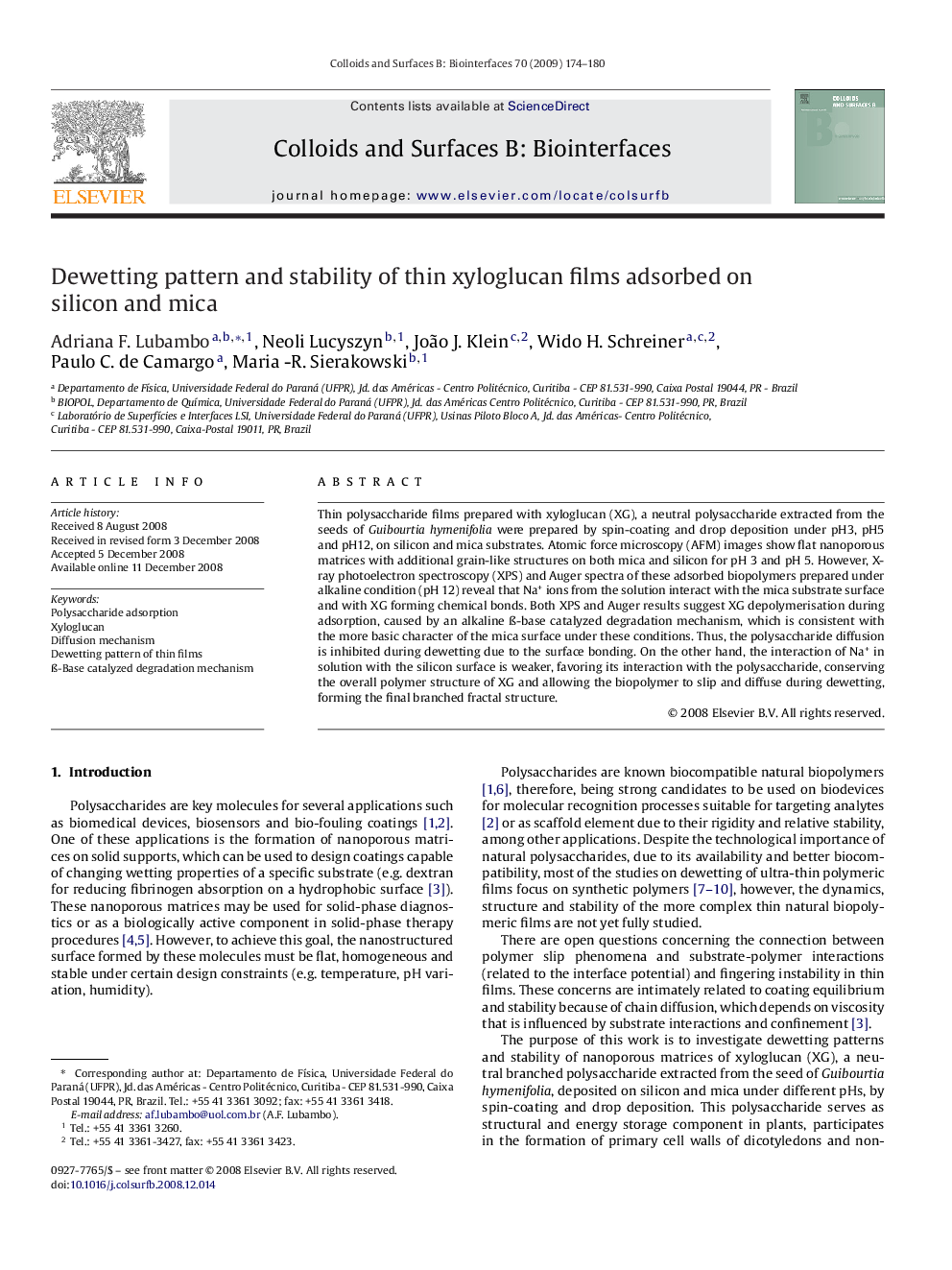| Article ID | Journal | Published Year | Pages | File Type |
|---|---|---|---|---|
| 602371 | Colloids and Surfaces B: Biointerfaces | 2009 | 7 Pages |
Thin polysaccharide films prepared with xyloglucan (XG), a neutral polysaccharide extracted from the seeds of Guibourtia hymenifolia were prepared by spin-coating and drop deposition under pH3, pH5 and pH12, on silicon and mica substrates. Atomic force microscopy (AFM) images show flat nanoporous matrices with additional grain-like structures on both mica and silicon for pH 3 and pH 5. However, X-ray photoelectron spectroscopy (XPS) and Auger spectra of these adsorbed biopolymers prepared under alkaline condition (pH 12) reveal that Na+ ions from the solution interact with the mica substrate surface and with XG forming chemical bonds. Both XPS and Auger results suggest XG depolymerisation during adsorption, caused by an alkaline ß-base catalyzed degradation mechanism, which is consistent with the more basic character of the mica surface under these conditions. Thus, the polysaccharide diffusion is inhibited during dewetting due to the surface bonding. On the other hand, the interaction of Na+ in solution with the silicon surface is weaker, favoring its interaction with the polysaccharide, conserving the overall polymer structure of XG and allowing the biopolymer to slip and diffuse during dewetting, forming the final branched fractal structure.
